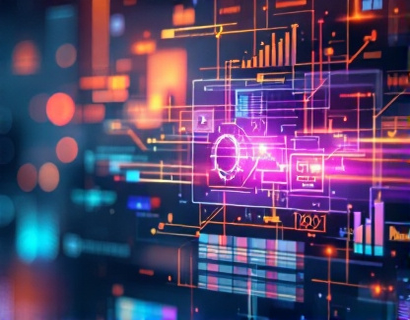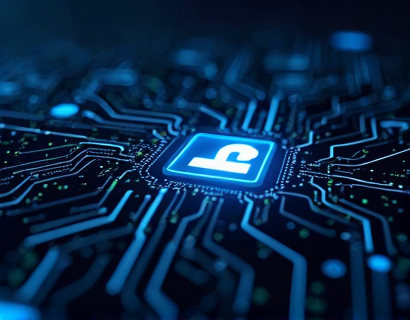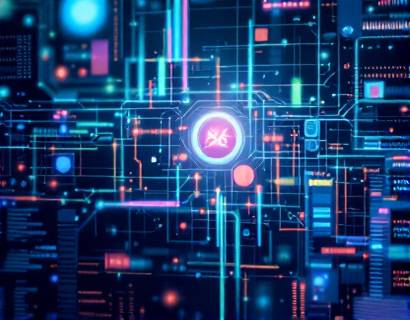Revolutionizing Digital Engagement: The Synergy of Crypto and AI
The intersection of blockchain technology and artificial intelligence (AI) is giving rise to a new era of digital engagement, one that promises enhanced security, personalization, and interactivity. This synergy is not just a technological curiosity but a transformative force reshaping how we interact online. For tech enthusiasts and professionals, understanding this convergence is crucial as it holds the key to the next generation of digital experiences. This article delves into the ways crypto and AI are merging to create advanced ecosystem solutions that redefine user experiences, focusing on the broader implications for digital transformation.
Enhanced Security Through Blockchain and AI
One of the most significant benefits of combining blockchain and AI is the unprecedented level of security it offers. Blockchain's decentralized and immutable ledger provides a robust framework for secure transactions, while AI enhances this by detecting and mitigating threats in real-time. AI algorithms can analyze vast amounts of data to identify patterns and anomalies, flagging potential security breaches before they occur. This proactive approach to security is essential in an era where cyber threats are becoming increasingly sophisticated.
For instance, AI-powered systems can monitor blockchain networks for unusual activity, such as unusual transaction volumes or patterns that deviate from the norm. By integrating machine learning models, these systems can adapt and improve over time, ensuring that security measures remain effective against evolving threats. This synergy not only protects user data but also builds trust in digital platforms, a critical factor for widespread adoption.
Personalization at Scale
AI's strength lies in its ability to process and analyze large datasets to deliver personalized experiences. When combined with blockchain, this capability is amplified. Blockchain ensures that user data is securely stored and managed, while AI uses this data to create highly tailored interactions. This combination allows for a level of personalization that was previously unattainable, enhancing user engagement and satisfaction.
Consider a digital ecosystem where user preferences, behaviors, and interactions are recorded on a blockchain. AI algorithms can then analyze this data to offer customized content, recommendations, and services. For example, a streaming platform could use AI to curate a playlist based on a user's listening history, while ensuring that the data used for personalization is securely stored and managed on the blockchain. This not only improves the user experience but also respects user privacy and data ownership.
Decentralized Identity Management
Identity verification and management are critical components of digital engagement, and the combination of blockchain and AI is revolutionizing this space. Traditional identity management systems are centralized, making them vulnerable to breaches and misuse. Blockchain provides a decentralized alternative, where user identities are stored in a secure, tamper-proof manner. AI enhances this by enabling seamless and secure authentication processes.
Decentralized identity (DID) solutions leverage blockchain to give users control over their personal data, allowing them to share verified information with services and applications as needed. AI can streamline this process by automating the verification and authentication steps, reducing friction and enhancing user experience. For instance, an AI-driven system can verify a user's identity across multiple platforms, ensuring consistent and secure access without the need for repetitive login credentials.
Smart Contracts and Automated Interactions
Smart contracts, self-executing contracts with the terms directly written into code, are another area where blockchain and AI converge to enhance digital interactions. AI can optimize smart contracts by analyzing data to predict outcomes, automate complex decision-making processes, and ensure compliance with contract terms. This synergy leads to more efficient and reliable automated systems.
For example, in supply chain management, AI can analyze real-time data to predict delivery times and potential delays, while smart contracts can automatically execute payments or trigger actions based on these predictions. This not only streamlines operations but also reduces the risk of human error and fraud. The combination of AI's analytical power and blockchain's transparency ensures that all parties have a clear and trustworthy record of transactions.
Enhanced User Interfaces and Experiences
The integration of AI with blockchain-based ecosystems is also transforming user interfaces and experiences. AI-driven interfaces can adapt in real-time to user preferences and behaviors, providing a more intuitive and personalized experience. Blockchain ensures that these interactions are secure and that user data is managed transparently and ethically.
Consider a digital wallet application that uses AI to learn from user habits and preferences, offering tailored suggestions and shortcuts. The blockchain component ensures that all transactions and data are securely stored and managed, giving users peace of mind. This level of personalization and security is a significant step forward in user experience design, setting new standards for digital applications.
Data Privacy and User Empowerment
Data privacy is a growing concern in the digital age, and the synergy of blockchain and AI offers a powerful solution. Blockchain's decentralized nature means that user data is not stored in a single, vulnerable location. AI can further enhance privacy by implementing advanced encryption and anonymization techniques, ensuring that sensitive information remains protected.
Users are empowered to control their data, deciding who can access it and for what purposes. AI can facilitate this by providing tools and interfaces that allow users to manage their data preferences and consent settings seamlessly. This not only enhances privacy but also builds trust between users and digital platforms, a critical factor for adoption and loyalty.
Challenges and Considerations
While the potential of blockchain and AI synergy is vast, there are challenges that need to be addressed. Scalability remains a significant issue, as both technologies require substantial computational resources. However, advancements in blockchain optimization and AI efficiency are gradually overcoming these hurdles.
Another consideration is the regulatory landscape. As these technologies evolve, regulatory frameworks must adapt to ensure they support innovation while protecting users. Collaboration between technologists, policymakers, and industry stakeholders is essential to create a balanced and forward-looking regulatory environment.
Future Prospects
The future of digital engagement through the synergy of blockchain and AI is promising. As these technologies continue to mature, we can expect even more innovative applications and use cases. From decentralized finance (DeFi) platforms to augmented reality (AR) experiences powered by AI and secured by blockchain, the possibilities are vast.
For tech enthusiasts and professionals, staying informed about these developments is crucial. The convergence of blockchain and AI is not just a technological trend but a fundamental shift in how we build and interact with digital systems. Embracing this synergy will be key to staying ahead in the rapidly evolving tech landscape.










































